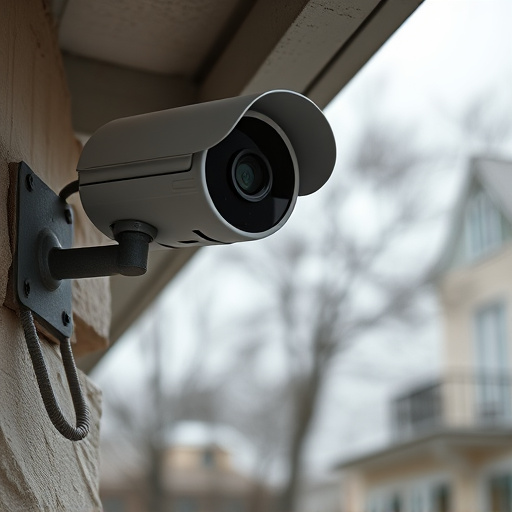Strategic placement of realistic fake security cameras at eye level or slightly elevated angles enhances security by mimicking genuine surveillance, deterring crime without attracting unwanted attention. Advanced design and technology make these cameras highly convincing, featuring accurate casing, lens placement, textures, and functional features like LED lights, motion sensors, and audio recording. However, their widespread adoption raises ethical concerns regarding potential misuse at various heights, blurring the line between security and public surveillance, and complicating legal liability for privacy breaches. Clear guidelines on acceptable use are needed to protect individuals' rights.
In today’s digital age, security measures have evolved beyond recognition. One innovative yet controversial aspect is the use of realistic-looking fake surveillance equipment. This article delves into the intricate world of these devices, focusing on their design and technological advancements that make them virtually indistinguishable from real cameras. We explore the ethical boundaries and legal implications surrounding their placement, particularly considering the subtle art of choosing the optimal ‘fake security camera height’ for maximum discretion.
- Understanding Fake Security Camera Placement: Why Discretion is Key
- Design and Technology Behind Realistic-Looking Surveillance Equipment
- Ethical Considerations and Legal Implications of Using Fake Cameras
Understanding Fake Security Camera Placement: Why Discretion is Key
In the realm of security, the placement of surveillance equipment plays a pivotal role in its effectiveness. When it comes to fake security cameras, discretion becomes an art form. These devices are designed to deter crime and provide a sense of security, but their true value lies not just in their presence but in how they are integrated into the environment. The height at which a fake security camera is placed is a crucial factor. Strategically positioning these cameras at eye level or slightly elevated angles mimics real surveillance setups, making them highly convincing to potential intruders.
By keeping these cameras out of plain sight, businesses and homeowners can create an illusion of constant monitoring without drawing unwanted attention. Discreet placement ensures that genuine users feel secure while misleading would-be criminals, ultimately enhancing the overall safety of a location. This clever use of fake security camera height placement adds an extra layer of protection, making it a significant aspect to consider in modern security strategies.
Design and Technology Behind Realistic-Looking Surveillance Equipment
The design and technology behind realistic-looking fake surveillance equipment have evolved significantly, allowing for more sophisticated and convincing fakes. Manufacturers carefully study authentic camera designs, from the casing to the lens and even the placement, known as fake security camera height placement, to ensure a lifelike appearance. Advanced materials and printing techniques enable them to replicate textures, logos, and brand markings with remarkable accuracy.
These replicas often incorporate LED lights that mimic the behavior of real cameras, such as power indicators or infrared capabilities for night vision. Motion sensors and audio recording features further enhance their realism. The goal is not only to look like genuine surveillance equipment but also to function similarly, creating a powerful psychological effect by deterring potential intruders or vandals.
Ethical Considerations and Legal Implications of Using Fake Cameras
The proliferation of realistic-looking fake surveillance equipment, while offering innovative security solutions, raises significant ethical and legal questions. One prominent concern revolves around the potential misuse of these devices, particularly when strategically placed at seemingly random heights. Fake security cameras, indistinguishable from real ones, could be used to invade privacy, creating a chilling effect on public spaces and individual freedoms. This is especially concerning in residential areas where the line between securing properties and monitoring everyday activities becomes blurred.
Moreover, legal implications arise from the ambiguity surrounding their use. Determining liability for any unauthorized surveillance or breach of privacy can become complex when fake cameras are involved. Legislation often lags behind technological advancements, making it challenging to regulate and enforce laws related to private security measures. As a result, individuals could be left vulnerable, facing ethical dilemmas and potential legal consequences without clear guidelines on the acceptable use of realistic fake surveillance equipment, particularly regarding camera height placement.
Realistic-looking fake surveillance equipment, when used ethically and legally, offers a discreet solution for enhancing security. By understanding the art of camera placement, leveraging advanced design and technology, and considering the broader implications, organizations can harness the power of these devices while maintaining integrity. Optimizing fake security camera height placement is just one aspect—when combined with thoughtful navigation through ethical considerations, it becomes a valuable tool in today’s digital era.
